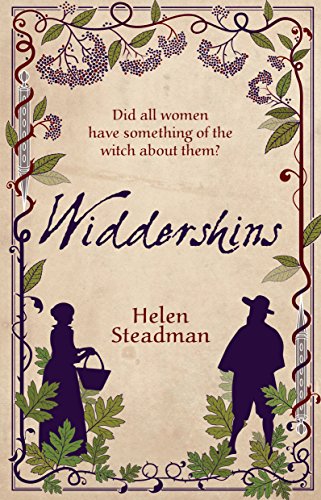Why a Booktrail?
1650s: The year of the witch-trials in Newcastle..’Did all women have something of the witch about them?’

1650s: The year of the witch-trials in Newcastle..’Did all women have something of the witch about them?’
‘Did all women have something of the witch about them?’ Jane Chandler is an apprentice healer. From childhood, she and her mother have used herbs to cure the sick. However, Jane will soon learn that her sheltered life in a small village is not safe and will not protect her from the troubles of the wider world.
Meanwhile, John Sharpe, a boy who lives in the same village, is beset by bad fortune. Regularly beaten by his father and having to bear his uncle’s raging sermons, he’s led to find his place in the world: as a witch-finder so that he might save innocents from the scourge of witchcraft.
Inspired by true events, ‘Widdershins’ tells the story of the women who were persecuted and the men who condemned them.
The gothic and dark churchyard right in the centre of the city with many dark secrets buried there – The burial which took place here and the injustices of how the so called trials were held and conducted brings tears to your eyes. The graves, now chipped and worn by time bear testament to how twisting the truth can lead to such dark consequences. Many women were buried here in unmarked graves. The author says the novel was inspired by the witch trials in1650 when 15 or 16 women were execute on the same day. Whilst Jane Martin in the novel is not mentioned on the graves or the burial records, it’s suspected that she was indeed one of them.
The fiction of the story is only a cover story – a girl is suspected to have escaped the hangman’s noose when women were rounded up from the streets of Newcastle and accused of witchery and other dark deeds. It’s frightening to see how these women were accused of evil whilst doing innocent things – having their periods, giving birth, picking berries, giving a man a hot drink of mead to soothe a sore throat…..
Further across the city, the Town Moor, is used for gatherings and fayres. Anywhere people meet and congregate become areas women can be hunted and judged, but they don’t even seem to be safe in their own homes, in the churches and whilst innocently gathering berries in the local woods.
“I’d been harvesting these plants from early childhood. There was feathery fennel for mother’s milk. There was spiky rosemary for remembrance. There was balm for bringing good cheer. There was silvery mugwort for the womb in all its phases. There was lavender for bringing sweet dreams to children and soothing mother’s tempters.”
“And so the great clock of the year would itself throughout the seasons.”
Susan: @thebooktrailer
Never before have I read such a heartbreaking and equally fascinating novel. Unbelievable really but when you realise that this tale is based heavily on true events, it becomes ever more unbelievable. I shuddered as I read – how an innocent girl, innocent women who healed people with flower remedies and berries gathered from the church yard were held up in court and deemed to be little more than witches. A woman ill and having a fit ” must have the devil inside her’ and even a women’s monthlies are something to be held in contempt.
There’s one particular scene when a woman accused of witchery in a graveyard is taken to ‘court’ and judged by jeering men who twist and turn every single innocent bit of speech, every action, into a sordid tale of evil. They ‘test’ the woman to see just how much of a witch she is – and if they don’t get the answer they want, they twist the evidence to fit. No woman has any chance of ever being cleared once accused. And if you’re a woman it would seem that if you haven’t been accused yet, you soon will be.
The most tragic part of the story was that of John – how as a young boy, everything which happens to him is twisted and interpreted by men in his life to mean something bad and unnatural. It made me think how people today are brainwashed into holding on to extreme beliefs – if they’re imbued into you early enough, can you even see what is happening to you? John does question his changing opinions but there is evidence and proof of every thing if you look hard enough. God is used as an excuse, a tool for man to do what he wants down on earth. I shivered at how relevant this story is now and has always been.
I’m from Newcastle and had not even heard of these witch trials but as soon asI’d read this boo, I headed down to St Andrew’s Church and stood beside the graves of women buried there. Names were too worn by time to see who still lies there but I shivered with the knowledge of what had happened here in plain sight – somewhere I’ve walked past many times and never thought to question. Do you know that saying ‘The only thing necessary for the triumph of evil is for good men to do nothing.” This lesson of history should be one we all should learn
Remarkable writing, crisp and raw to the point of cutting me as I read. It’s evocative and those herbs, potions and lessons of natural remedies take you back to a time when women were vilified and condemned for being women. Set in Newcastle, the story of the witch hunts will haunt me for some time to come”
Author/Guide: Helen Steadman Destination: Newcastle Departure Time: 1650s
Back to Results